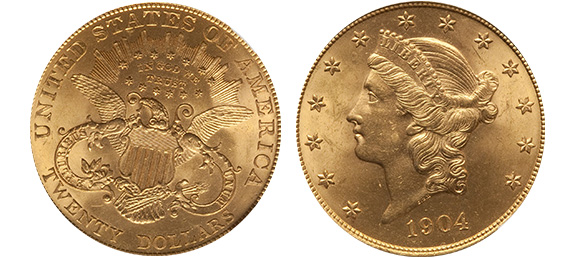
Staff at the University at Buffalo Library just discovered dozens of silver and gold coins, The Buffalo News reports. The coins, which range in date from the fifth century B.C. to the late first century A.D. and feature gods and rulers, were struck in the Greek and Roman Empires.
The 40 silver Greek coins, three gold Greek coins and dozen gold Roman coins were found in a small gray box on a metal shelf inside a vaulted room, which stores the university’s most valuable possessions. The set was donated to the university by benefactor Thomas B. Lockwood in 1935, but remained largely ignored until classics professor Philip Kiernan asked specialists to come to the library and examine them.
The majority of the coins are in excellent condition, and each coin could fetch tens of thousands of dollars. However, Kiernan, an expert on ancient coins, said he did not know the market value of these newly found coins. “My job as an archaeologist is to appreciate their historical value and their historical value is absolutely priceless,” he stated.
When Kiernan initially inquired about the coins, he expected to be shown “a bunch of replicas,” but was quite stunned when he saw the collection in person. Not only were the coins authentic, but their condition was also largely immaculate. Since these coins were very valuable back then, they didn’t circulate much, which likely explains their exquisite condition, Kiernan said. “They weren’t really circulated. They were hoarded. Gold coins like that were made for storing your wealth,” the ancient coins expert clarified. “It wasn’t spending money.”
The silver Greek coins are known as tetradrachm, and they come in various sizes and weights. The smaller golden Roman coins are known as aurej, and the set includes one from each era of the first 12 Roman emperors, from Julius Caesar to Domitian. One of the big gold Greek coins features the Egyptian Queen Arsinoe.
One especially remarkable coin is a gold Roman aureus that displays Otho, who reigned as emperor for only three months in 69 A.D. Due to his short reign, the emperor didn’t have much time to strike coins. In addition, the coin has an error on the reverse side, rendering this aureus particularly rare and valuable.
After placing the coins in individual plastic containers, Kiernan wants to show them to his students. Moreover, he plans to write a book about them with the help of his students’ research into their origin.
Photo Credit: Douglas Levere

